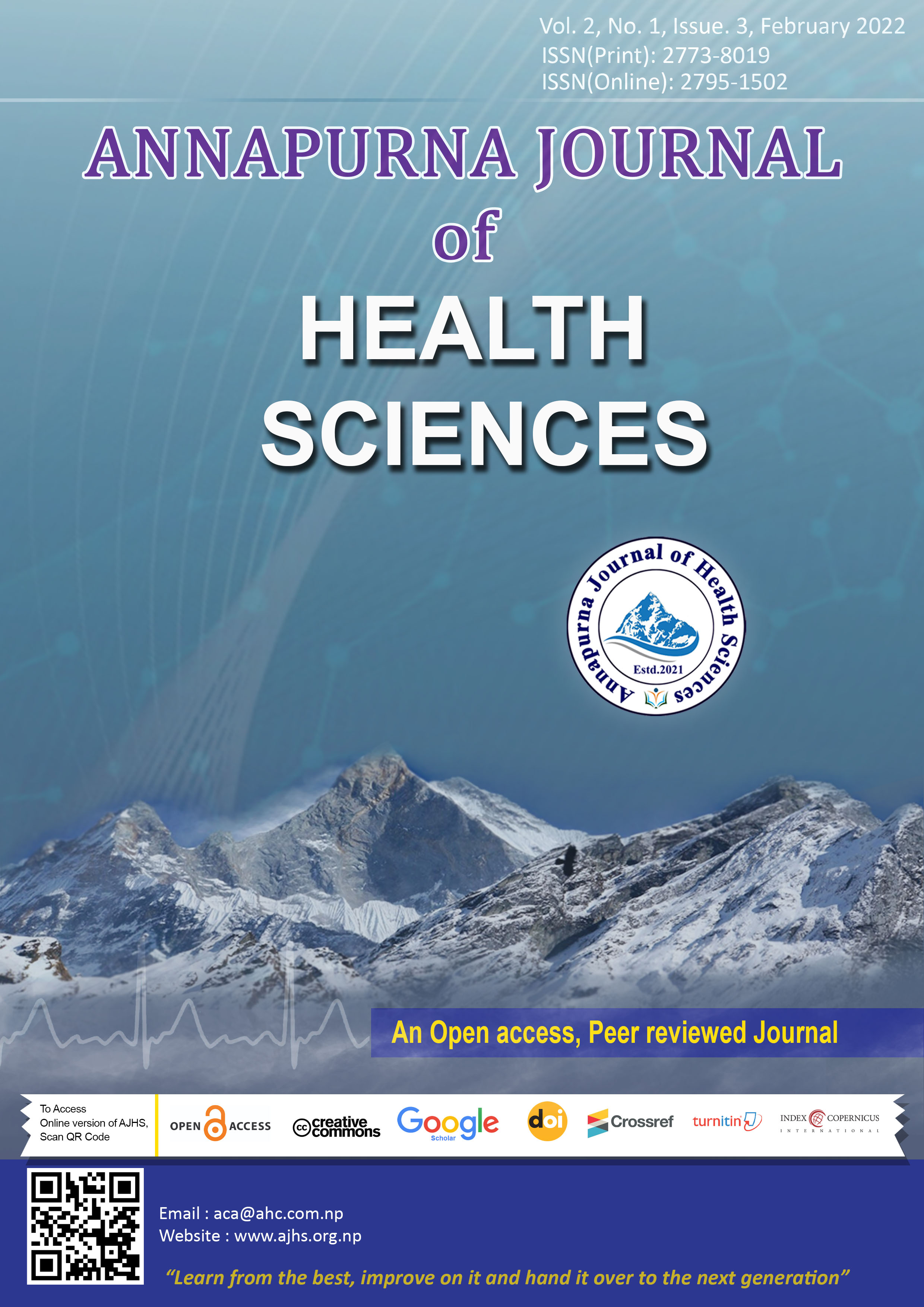Posterior Urethral Valves; Outcome Analysis after Endoscopic Valve Ablation
Keywords:
Endoscpic valve ablation Outcome, Posterior urethral valve (PUV)Abstract
Introduction: Posterior urethral valves, a major male infra-vesical obstructive
uropathy leading to chronic renal failure are most common paediatric urological
emergencies with an incidence of 1:5000 -1:8000. Early diagnosis, management
and follow up of these patients is challenging in low socio-economic countries
like Nepal. This study evaluates the cases with posterior urethral valves and their
outcomes after endoscopic valve ablation over a period of five years.
Methods: In this five year retrospective study from January 2016 to December
2020, all the cases with posterior urethral valves undergoing endoscopic valve
ablation were reviewed and data were analysed for age, presentation, diagnosis
and outcome at follow-up after management.
Results: A total of sixty patients with posterior urethral valves were managed with
definitive endoscopic ablation in the five year period. Median age at ablation was
11 months (10 days to 4 years). Commonest presentation was features of bladder
outlet obstruction evident by poor stream, straining and dribbling of urine. Only
26.7% cases were managed in neonatal period due to low suspicion of valve in
prenatal fetal scan. 83.3% of patients had complete relief from obstruction with
normal urinary stream at follow up after ablation of valves with 15% of cases
needing re-ablation of the residual valve. Two cases had to undergo anti-reflux
surgery two years after valve ablation. Mortality was seen in one case due to cross
sepsis. Majority of patients were in regular follow-up which showed its direct
relationship to the outcome of the disease after valve ablation.
Conclusion: Early detection, proper relief of obstruction and regular follow-up
strategies can avoid life threatening complications of posterior urethral valves.
Only treating posterior urethral valves is not the aim of obtaining successful
relief of obstruction. Parent’s education, developing prenatal ultrasound skills to
detect or suspect prenatal PUVs and early referral to tertiary centers where these
patients can be managed promptly are equally important.
Downloads
Downloads
Published
How to Cite
Issue
Section
License

This work is licensed under a Creative Commons Attribution 4.0 International License.
This license allows reusers to distribute, remix, adapt, and build upon the material in any medium or format, so long as attribution is given to the creator. The license allows for commercial use.




